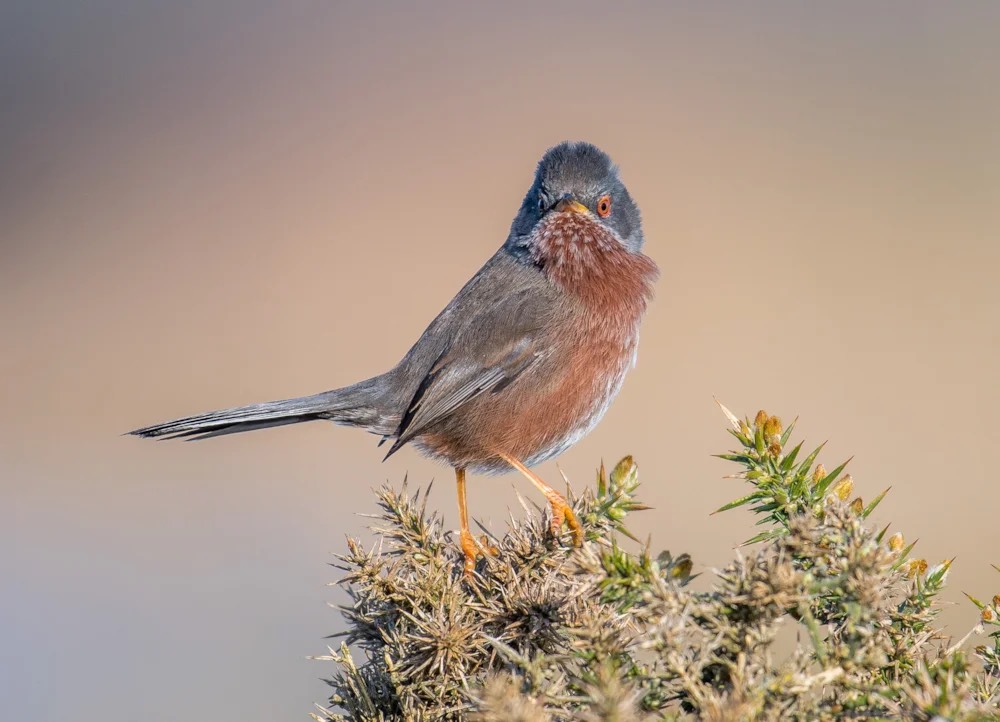
The adult male is a richly colored reddish-brown breasted warbler with red eyes and a deep red eye ring. Its reddish-brown throat is patterned with pale buff spots and its reddish-brown underside transitions to medium brown with a dirty white belly. It has a grayish-brown back and a long, thin dark-colored tail. The forehead is distinctive, pronounced and gray in color. It has short, rounded gray wings, a short, pointed bill with a yellowish base, and pale legs and feet.

The female is not as bright as the male and lacks the red breast coloration and is generally a more greyish-coloured bird. The juvenile is similar to the female but with even grayer tones.
Close up of a Dartford Warbler
What does a Dartford Warbler sound like?
A low, fairly fast, reverberant, almost harsh warble, interspersed with higher notes similar to ‘chirr – chirr – chirr’.

What does a Dartford Warbler eat?
Its favorite diet is insects and spiders that it forages for in low weeds, but it also selects berries and seeds, especially in winter.


Where can I see the Dartford Warbler?
Dartford warblers are breeding residents of the United Kingdom that are usually found in low heather or gorse areas, particularly around the heathland areas of southern and southwestern England.

Signs and tips to detect
They are often difficult to detect while feeding among heather or low gorse; On a warm summer’s day you will find them basking in the sun on a flowering gorse bush or fluttering quickly between the bushes. The shape and coloration, especially of the male, help to identify it, although it is easy to confuse it with the subalpine wandering warbler, an extremely rare visitor to our coasts from southern continental Europe and Africa.

How does a Dartford Warbler reproduce?
Dartford warblers usually mate for life and both birds usually build a cup-shaped nest close to the ground, either in heather or gorse, on gently sloping coastal heathland. The female lays up to three clutches between April and July, each clutch consisting of between 3 and 5 eggs. The eggs are very pale green or white with brown specks. The eggs hatch after two weeks and the chicks fledge after another fourteen days.
Dartford Warbler perched on a fence

How long does the Dartford Warbler live?
As with most UK warblers, the average lifespan of the Dartford is up to five years.


